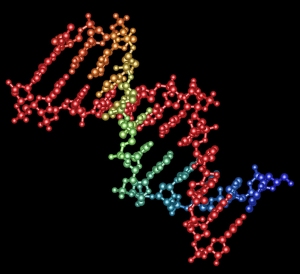There have been several studies released in the past few months that offer promises for better understanding and treatment of several different chronic conditions. Today’s post is going to review some of these advances and how they may affect those with these chronic conditions and how they may impact disability claims.
- Study Shows Antibiotics May Relieve Chronic Lower Back Pain: This new study shows that 4 in 10 chronic back pain cases may be caused by bacteria and that 80% of these cases may be successfully treated with antibiotics.
 In this double-blind Danish study, patents were treated with either a placebo or antibiotic regiment 3 times a day for 100 days and then re-evaluated. The placebo group showed no noticeable improvement while patients who received the antibiotics were better able to function after one year with less lower back pain, less leg pain, and fewer days off work due to the condition. These new treatment avenues could help some people who suffer from chronic back pain regain more independence and return to more normal activities.
In this double-blind Danish study, patents were treated with either a placebo or antibiotic regiment 3 times a day for 100 days and then re-evaluated. The placebo group showed no noticeable improvement while patients who received the antibiotics were better able to function after one year with less lower back pain, less leg pain, and fewer days off work due to the condition. These new treatment avenues could help some people who suffer from chronic back pain regain more independence and return to more normal activities. - Los Angeles Doctor Develops New Fibromyalgia Test: Individuals who suffer from Fibromyalgia know the frustration and extended time it often takes to reach a conclusive diagnosis of their condition. A new test developed by Dr. Bruce Gillis in Santa Monica, California is the first blood test able to recognize two blood markers for Fibromyalgia that can be found in the immune system. The test measured the levels of two specific proteins produced by white blood cells: chemokines and cytokines. Patients who suffer from Fibromyalgia also lack the production of these two specialized proteins. This test may be able to offer more definitive evidence, or their holy grail of objective proof, for the insurance company claim examiners and consulting doctors who are dubious and skeptical about any and every disability claim involving Fibromyalgia.
- Long-Term Intake Of Omega-3 Fatty Acids Can Greatly Reduce Risk of Rheumatoid Arthritis: This is a Swedish study of 32,000 women over a 10-year period. In the study, people who ate certain types of fatty fish at least once per week developed rheumatoid arthritis at only half the rate of women who at little or no fish. The researchers behind the study say that the Omega-3 fatty acids present in these fish have an anti-inflammatory effect on the immune system. Since rheumatoid arthritis occurs when the immune system mistakenly attacks joints, the anti-inflammatory effects mitigates the body’s inflammation, reducing the pain and cartilage damage caused by arthritis.
- Study Shows Genetic Relationships Between 5 Major Psychiatric Disorders: The largest genome-wide study ever conducted on schizophrenia, bipolar disorder, major depressive disorder, autism spectrum disorders (ASD), and attention-deficit/hyperactivity disorder (ADHD) has demonstrated that genetic relationships exist among these conditions. The study’s findings show that many of these disorders may be far more connected than many
 people consider today. The results show that the genetic overlaps are most significant between schizophrenia and bipolar disorder. They’re moderate between bipolar disorder and depression, schizophrenia and depression, and depression and ADHD. The lowest correlation of any significance was found between schizophrenia and autism. These correlations will help researchers find new protocols to treat behavioral patterns as opposed to specific conditions, allowing for more precise and patient-specific treatment therapies.
people consider today. The results show that the genetic overlaps are most significant between schizophrenia and bipolar disorder. They’re moderate between bipolar disorder and depression, schizophrenia and depression, and depression and ADHD. The lowest correlation of any significance was found between schizophrenia and autism. These correlations will help researchers find new protocols to treat behavioral patterns as opposed to specific conditions, allowing for more precise and patient-specific treatment therapies. - New treatment offers relief for Colitis and Chrohn’s disease: Two studies show that the same treatment may provide relief for sufferers of both Crohn’s disease and Ulcerative Colitis. These trials took place with nearly 2,000 patients in 34 countries and monitored them for one year of treatment with the intravenous antibody medication, Vedolizumab. This drug works by inhibiting the immune system from releasing cytokines, the same protein coincidentally used as a marker in the new Fibromyalgia test above. The inflammation caused by this protein causes many of the uncomfortable symptoms brought on by these diseases. Not only did the drug work to prevent the symptoms of the conditions but even better more often resulted in remissions. These studies also showed that patients were able to stop using some commonly prescribed drugs and therapies to treat Colitis and Chrohn’s, helping avoid their significant and common side effects such as weight gain, nausea, and headaches. This new treatment gives sufferers the opportunity to regain more of their lives without having to deal with the residual effects of the disease along with the side effects of prescriptions that can prevent claimants from being able to return to work.
As medical research progresses, more sufferers of chronic diseases are able regain their lives and reduce their risks of becoming or remaining permanently disabled. New advances are made every day, and new studies continue to find links that help understand the reasons and factors underlying – and treatments for – many chronic conditions, giving patients and doctors new directions in finding different and more effective treatment protocols for conditions which can be terribly debilitating.
If you are suffering from a chronic condition and need help with your disability insurance claim, please call our firm at (855) 828-4100 or visit our website to sign up for a free consultation.


